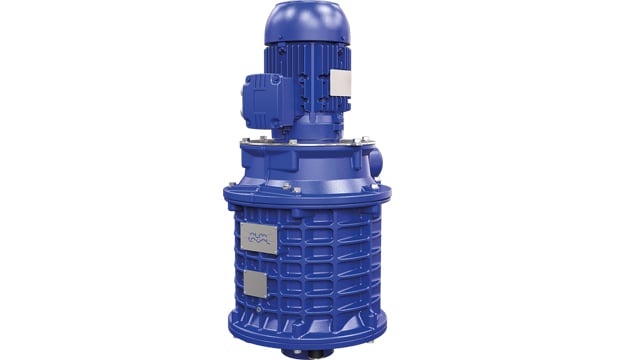PureVent
PureVent 2.0 is a radical new approach to cleaning the gas vented from engine crankcases by using centrifugal separation technology to remove oil mist and other particles, and help protect the environment.
An estimated 3500 m3 of lube oil ends in the world's oceans every year by allowing crankcase gas containing oil mist from marine diesel engines to pass into the atmosphere un-cleaned. This oil mist can drift long distances in aerosol form before the droplets finally settle on the sea – or on land, with the pollution this entails.
Although there are stringent regulations regarding oil discharges in bilge water, there are – as yet – no limitations on oil discharges into the sea via crankcase ventilation. Exhaust emissions from such engines are normally the prime concern, but crankcase gas still represents important environmental and health concerns. Crankcase gas is much less diluted and can cause high oil concentrations in limited areas. The oil mist can also soil a ship's engine spaces, decks and areas near the ventilation outlet. This is highly undesirable on board cruise ships, for example.
PureVent 2.0 represents a radical new approach to the cleaning of crankcase gas in high-capacity installations. Developed specifically for use with marine diesel engines and power plant generators, PureVent technology employs high-speed centrifugal separation to separate oil mist and other particles from the crankcase gas produced by these engines. The separated oil can even be re-circulated for use as lubricant.
Cleaning efficiency is as high as 99.99% for a capacity of 40 m3/hour and 98.5% at 150 m3/hour. These performance values cannot be matched by any previous technology – traditional cyclones, air traps and filters have never been able to provide satisfactory results.
Fonctionnement
Le séparateur centrifuge est composé d’une pile de 185 assiettes en composite. La force centrifuge générée par la rotation des assiettes projette les gouttelettes en suspension vers la périphérie du séparateur. L’air est évacué par le haut, déchargé de tous les contaminants.
L’huile collectée est traitée à travers un séparateur de traitement d’huile puis un filtre automatique avant d’être rediriger vers le circuit de lubrification.


